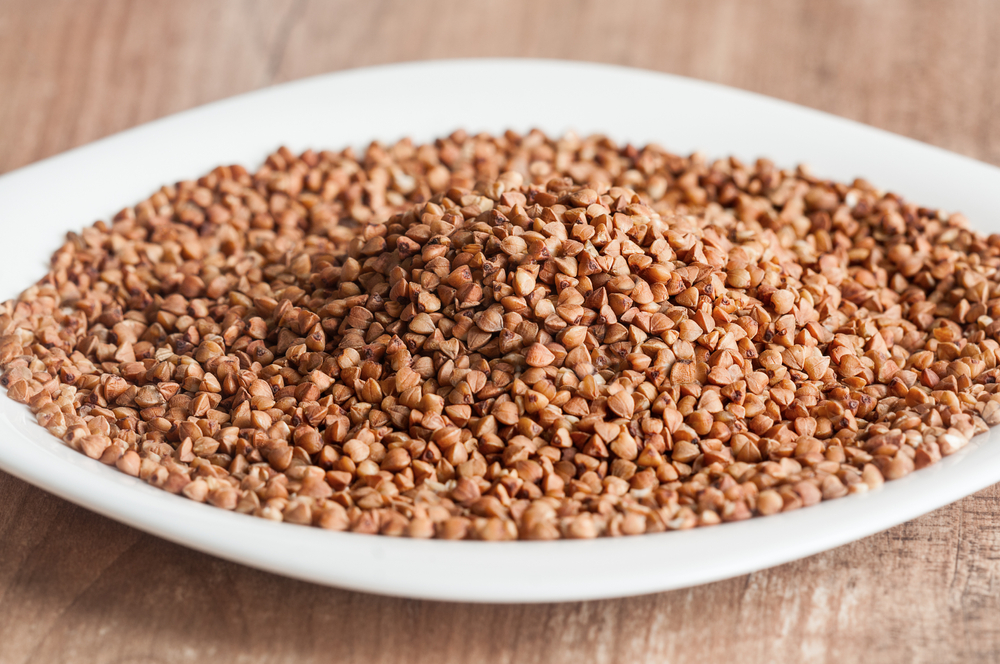Thanks to the growing demand for gluten-free foods and interest in alternative flours, buckwheat is seeing a resurgence.

For those in the know, Bouchard Family Farms is the place to go when you need Tartary flour for making French-Canadian pancakes and crepes or Japanese soba noodles. For 30-plus years, the family farm, perched on the tippy top of Maine, has grown Tartary buckwheat and milled it into flour. Over the years, thanks in part to a growing demand for gluten-free foods and interest in alternative flours, it has created a market for buckwheat as both a food and cover crop. Starting to grow it, though, was a risk taken out of necessity.
When Joe Bouchard first planted buckwheat in the 1980s, he did it because he wanted to diversify. For nearly six generations, the farm had grown potatoes and grains such as oats, but as the price of potatoes declined in part due to overseas competition, the farm needed to create new income streams. That’s when it introduced Tartary buckwheat—at the time, a relatively unknown and unused product—to the fields.
“We had to do a lot of food shows to get the word out,” recalls Bouchard. “It was pretty difficult, but then again, everything you do is difficult.”
Despite its name, buckwheat doesn’t contain wheat; it’s not even a grain. Gluten-free, it’s considered a pseudocereal, which are seeds consumed as cereal grains (such as quinoa and amaranth) that don’t grow on grasses. It has a nutty, earthy flavor that, along with its gluten-free trait, makes it popular among bakers.

Buckwheat. Photo by Tinka Mach, Shutterstock.
Buckwheat originated in China and spread worldwide, becoming an essential ingredient for soba noodles, kasha, galettes and more. In the late 1800s, it was incredibly popular both for making flour and animal feed. But as the agricultural system industrialized, the pseudograin fell out of favor—that is, until now.
Today, there are two main types of buckwheat grown: the Tartary buckwheat that Bouchard Family Farms grows and common buckwheat. While both types are similar, Tartary is self-fertile and grows well in cold climates, while common buckwheat requires pollination to reproduce and prefers temperate climates. Tartary buckwheat is also more bitter than common buckwheat, and it is seeing a resurgence of use in crop rotation, which can help build soil health.
“Farmers love it as a short-season, quick-growing cover crop,” says Tom Molloy, an agronomist with the University of Maine Cooperative Extension. “It’s fairly fast growing and it’s competitive with weeds.”
Buckwheat also reportedly takes up phosphorus, a critical nutrient for plant growth, and then releases the nutrients off which later crops thrive. While phosphorus occurs naturally in the soil, farmers add it to the soil to increase soil health and yield, and like many agricultural inputs, it is becoming harder to obtain.
Karen and Steve Getz fell in love with buckwheat in San Jose, California’s Japantown, where soba noodles are made of ancient grain. Karen, who has a background as a baker and cheesemaker, and Steve, who worked for Organic Valley, wanted to create a product using buckwheat. Yet, it wasn’t until they met farmers cultivating Tartary buckwheat in Aroostook County that the pair decided to relocate to Maine to live out their dream of creating Maine Crisps, a line of buckwheat crisps.
“When I was up in Maine’s most Northern Country and I spotted the buckwheat growing, everything came together,” says Karen. “I could combine my love of baking and buckwheat to make something that would be safe for people with celiac disease or a gluten sensitivity to eat while supporting our local farm community.”
Despite its recent resurgence, buckwheat has yet to hit the mainstream. The Getzes get all of their buckwheat from the Bouchard Family Farms, in part because the farm is also able to mill the buckwheat in its certified gluten-free mill, but they believe in the crop’s potential.
“Buckwheat is a great crop because you get two crops out of it really—the buckwheat seed itself but also its flowers and, when it’s in bloom, before those flowers turn into a seed, [it’s where] you get buckwheat honey from,” says Karen.
Throughout Maine, Molloy is seeing steady growth of buckwheat as a cover crop plant, and the Cooperative Extension is encouraging some growers to try it out as a cereal. They’ve seen success with buckwheat cutting back on weeds and diseases when growers of other cereal crops plant it in rotation. The challenge that still exists is helping farmers determine when buckwheat is ready to harvest; unlike other crops that dry out before harvest, buckwheat should still be green when harvested.
“We hope it’s going to increase; we have to continue to market it,” says Bouchard, who, in addition to Maine Crisps, sells his buckwheat to supermarkets and other stores, as well as a good deal of direct-to-consumer shipping.
As the buckwheat resurgence gains momentum in Maine, farmers in other states are taking notice, with farmers in New York working on buckwheat with the Cornell Cooperative Extension and growers from Ohio to Missouri also experimenting with the crop.
During the last Cold War the Russian basketball team came to the US to show that in sport we could overcome our political differences. When they discovered there was no buckwheat on the menu they refused to play until some was obtained. The rutin in buckwheat makes a big difference to health and vitality and blood pressure
Very informative article about food and agriculture.